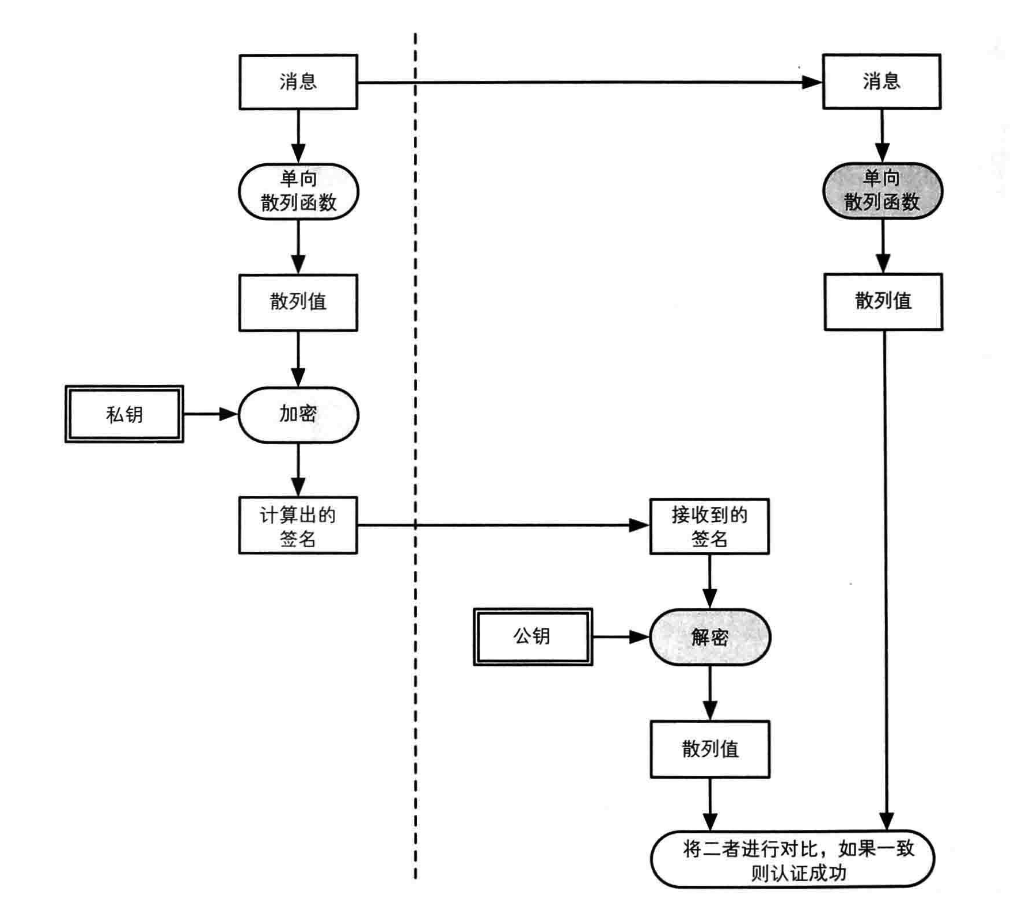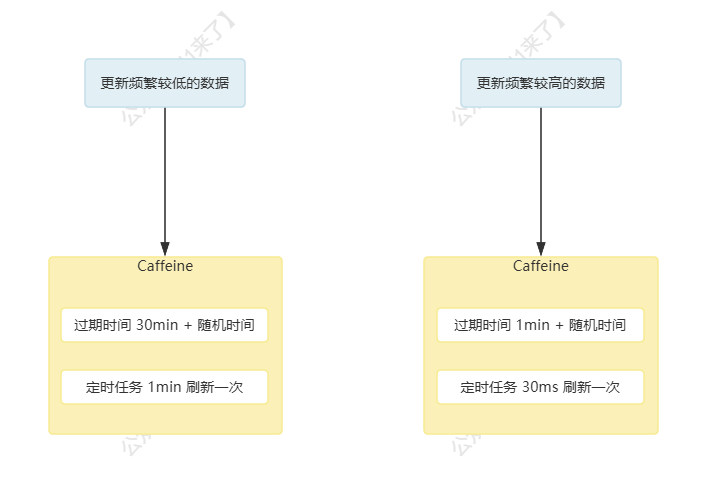若该文为原创文章,未经允许不得转载
本文章博客地址:https://blog.csdn.net/qq21497936/article/details/143932273
各位读者,知识无穷而人力有穷,要么改需求,要么找专业人士,要么自己研究
长沙红胖子Qt(长沙创微智科)博文大全:开发技术集合(包含Qt实用技术、树莓派、三维、OpenCV、OpenGL、ffmpeg、OSG、单片机、软硬结合等等)持续更新中…
OSG开发专栏(点击传送门)
上一篇:《OSG开发笔记(三十二):深入理解相机视口、制作支持与主视图同步变换旋转的相机HUD》
下一篇:《OSG开发笔记(三十四): OsgUtil::Simplifier:简化几何体,提升显示性能和渲染效率》
前言
前面的相机hud可以单独显示图形,继续深入研究相机hud,技术就是子视图了,实现该功能的直接技术是从相机技术。
本篇描述osg从相机技术
Demo


相机视口的关键调用
是否清除颜色深度缓存(清除)
pCamera->setClearMask(GL_DEPTH_BUFFER_BIT);
如果不清除颜色缓存,渲染的窗口中若无内容,则将其他窗口渲染的内容显示到当前窗口。
设置渲染顺序(最后渲染)
// 设置POST渲染顺序(最后渲染)
pCamera->setRenderOrder(osg::Camera::POST_RENDER);
后渲染的优先级比较高(最后显示,显示优先级最高)。
设置是否接受事件(不接受)
// 设置为不接收事件,始终得不到焦点
pCamera->setAllowEventFocus(false);
设置视口大小
// 视口就是引擎三维的区域,但是注意区别于屏幕的坐标系(屏幕是左上为0,0,而三维引擎是左下为0,0)
pSlaveFrontCamera->setViewport(0,
0,
rect().width() / 4,
rect().height() / 4);
设置从相机故过程
步骤一:新建相机
osg::ref_ptr<osg::Camera> pSlaveFrontCamera = new osg::Camera;
步骤二:设置上下文
pSlaveFrontCamera->setGraphicsContext(_pViewer->getWindow());
步骤三:设置视图区域
// 视口就是引擎三维的区域,但是注意区别于屏幕的坐标系(屏幕是左上为0,0,而三维引擎是左下为0,0)
pSlaveFrontCamera->setViewport(0,
0,
rect().width() / 4,
rect().height() / 4);
步骤四:设置渲染顺序
pSlaveFrontCamera->setRenderOrder(osg::Camera::POST_RENDER);
步骤五:关键步骤添加从相机
第二个参数是缩放矩阵,第三个参数是旋转矩阵
_pViewer->addSlave(pSlaveFrontCamera,
osg::Matrix(),
osg::Matrix::rotate(osg::DegreesToRadians(0.0), 0.0, 0.0, 0.0),
true);
Demo关键源码
osg::ref_ptr<osg::Node> OsgWidget::getMulViewCameraNode()
{
// 隐藏整个demo全局的按钮面板(没用到按键的直接隐藏,不影响此Demo)
{
ui->groupBox_pannel->setVisible(false);
ui->label_cursor->setVisible(false);
ui->label_cursor_2->setVisible(false);
ui->label_msg->setVisible(false);
ui->label_state->setVisible(false);
}
osg::ref_ptr<osg::Group> pGroup = new osg::Group;
// 绘制盒体(立方体、长方体)
{
osg::ref_ptr<osg::Geode> pGeode = new osg::Geode;
// 创建专门指明精细度的类osg::TessellationHints,并设置对应精细度
osg::ref_ptr<osg::TessellationHints> pHints = new osg::TessellationHints;
pHints->setDetailRatio(0.5);
// 绘制几何类型(几何体)
qreal width = 5.0f;
// 函数1
pGeode->addDrawable(new osg::ShapeDrawable(new osg::Box(osg::Vec3(0, 0, 0), width), pHints));
#if 1
// 设置关闭光照:OFF,同时旋转都能看到了(光照关闭,法向量不起作用)
{
osg::StateSet *pStateSet = pGeode->getOrCreateStateSet();
pStateSet->setMode(GL_LIGHTING, osg::StateAttribute::ON);
// pStateSet->setMode(GL_LIGHTING, osg::StateAttribute::OFF);
}
#endif
pGroup->addChild(pGeode);
}
// 创建多视口相机
{
#if 0
// 这里改用了自己窗口已经创建的,这块废掉了,但是保留,基本的核心思想是一样的
osg::ref_ptr<osg::GraphicsContext::WindowingSystemInterface> pWindowingSystemInterface
= osg::GraphicsContext::getWindowingSystemInterface();
if(!pWindowingSystemInterface.get())
{
LOG << "if(!pWindowingSystemInterface.get())";
return pGroup.get();
}
unsigned int width = 0;
unsigned int height = 0;
pWindowingSystemInterface->getScreenResolution(osg::GraphicsContext::ScreenIdentifier(0),
width,
height);
osg::ref_ptr<osg::GraphicsContext::Traits> pTraits = new osg::GraphicsContext::Traits;
{
pTraits->x = 0;
pTraits->y = 0;
pTraits->width = width;
pTraits->height = height;
pTraits->windowDecoration = false;
pTraits->doubleBuffer = true;
pTraits->sharedContext = 0;
}
LOG << pTraits->x << pTraits->y << pTraits->width << pTraits->height;
osg::ref_ptr<osg::GraphicsContext> pGraphicsContext = osg::GraphicsContext::createGraphicsContext(pTraits.get());
if(!pGraphicsContext->valid())
{
LOG << "if(!pGraphicsContext->valid())";
return pGroup.get();
}
#endif
double angle = 15.0f;
#if 1
// 前
osg::ref_ptr<osg::Camera> pSlaveFrontCamera = new osg::Camera;
pSlaveFrontCamera->setGraphicsContext(_pViewer->getWindow());
// 视口就是引擎三维的区域,但是注意区别于屏幕的坐标系(屏幕是左上为0,0,而三维引擎是左下为0,0)
pSlaveFrontCamera->setViewport(0,
0,
rect().width() / 4,
rect().height() / 4);
pSlaveFrontCamera->setRenderOrder(osg::Camera::POST_RENDER);
_pViewer->addSlave(pSlaveFrontCamera,
osg::Matrix(),
osg::Matrix::rotate(osg::DegreesToRadians(0.0), 0.0, 0.0, 0.0),
true);
#endif
#if 1
// 后
osg::ref_ptr<osg::Camera> pSlaveBehindCamera = new osg::Camera;
pSlaveBehindCamera->setGraphicsContext(_pViewer->getWindow());
// 视口就是引擎三维的区域,但是注意区别于屏幕的坐标系(屏幕是左上为0,0,而三维引擎是左下为0,0)
pSlaveBehindCamera->setViewport(0,
rect().width() / 4 * 3,
rect().width() / 4,
rect().height() / 4);
pSlaveBehindCamera->setRenderOrder(osg::Camera::POST_RENDER);
_pViewer->addSlave(pSlaveBehindCamera,
osg::Matrix::translate(0, 0, 0),
osg::Matrix::rotate(osg::DegreesToRadians(30), 1.0, 0.0, 0.0),
true);
#endif
#if 0
// 左
// osg::ref_ptr<osg::Camera> pSlaveLeftCamera = new osg::Camera;
// pSlaveLeftCamera->setGraphicsContext(_pViewer->getWindow());
osg::ref_ptr<HudRotateCamera> pSlaveLeftCamera = new HudRotateCamera;
pSlaveLeftCamera->setGraphicsContext(_pViewer->getWindow());
pSlaveLeftCamera->setMasterCamera(_pViewer->getCamera());
pSlaveLeftCamera->setViewport(0,
rect().height() / 8 * 3,
rect().width() / 4,
rect().height() / 4);
pSlaveLeftCamera->setRenderOrder(osg::Camera::POST_RENDER);
#if 0
_pViewer->addSlave(pSlaveLeftCamera,
osg::Matrix(),
osg::Matrix::rotate(osg::DegreesToRadians(angle), 0.0, 0.0, 1.0),
true);
#endif
#if 0
// 设置相机位置,观察目标点和方向
osg::Vec3f vec3Eye = osg::Vec3f(100, 100, 0);
osg::Vec3f vec3Center = osg::Vec3f(0, 0, 0);
osg::Vec3f vec3Up = osg::Vec3f(0, 1, 0);
pSlaveLeftCamera->setViewMatrixAsLookAt(vec3Eye, vec3Center, vec3Up);
_pViewer->addSlave(pSlaveLeftCamera);
#endif
#if 1
// 设置slave相机的位置和方向
osg::ref_ptr<osg::MatrixTransform> transform = new osg::MatrixTransform();
// 设置平移矩阵,根据需要进行调整
osg::Matrix matrix;
matrix.makeTranslate(0, 0, 0); // 这里的x, y, z是你想要平移到的位置
transform->setMatrix(matrix);
transform->addChild(pGroup);
_pViewer->addSlave(pSlaveLeftCamera,
osg::Matrix(),
osg::Matrix::rotate(osg::DegreesToRadians(15.0f), 0.0, 1.0, 1.0),
true);
pSlaveLeftCamera->setProjectionMatrixAsPerspective(
100.0f, 1.0, 1.0f, 100.0f);
#endif
#endif
#if 0
// 右
osg::ref_ptr<osg::Camera> pSlaveRightCamera = new osg::Camera;
pSlaveRightCamera->setGraphicsContext(_pViewer->getWindow());
pSlaveRightCamera->setViewport(rect().width() / 4 * 3,
rect().height() / 8 * 3,
rect().width() / 4,
rect().height() / 4);
pSlaveRightCamera->setRenderOrder(osg::Camera::POST_RENDER);
_pViewer->addSlave(pSlaveRightCamera,
osg::Matrix(),
osg::Matrix::rotate(osg::DegreesToRadians(-angle), 0.0, 0.0, 1.0),
true);
#endif
#if 0
// 上
osg::ref_ptr<osg::Camera> pSlaveUpCamera = new osg::Camera;
pSlaveUpCamera->setGraphicsContext(_pViewer->getWindow());
pSlaveUpCamera->setViewport(rect().width() / 8 * 3,
0,
rect().width() / 4,
rect().height() / 4);
pSlaveUpCamera->setRenderOrder(osg::Camera::POST_RENDER);
_pViewer->addSlave(pSlaveUpCamera,
osg::Matrix(),
osg::Matrix::rotate(osg::DegreesToRadians(angle), 1.0, 0.0, 0.0),
true);
#endif
#if 0
// 下
osg::ref_ptr<osg::Camera> pSlaveDownCamera = new osg::Camera;
pSlaveDownCamera->setGraphicsContext(_pViewer->getWindow());
pSlaveDownCamera->setViewport(rect().height() / 8 * 3,
rect().height() / 8 * 6,
rect().width() / 4,
rect().height() / 4);
pSlaveDownCamera->setRenderOrder(osg::Camera::POST_RENDER);
_pViewer->addSlave(pSlaveDownCamera,
osg::Matrix(),
osg::Matrix::rotate(osg::DegreesToRadians(-angle), 1.0, 0.0, 0.0),
true);
#endif
}
return pGroup.get();
}
工程模板v1.36.0

入坑
入坑一:设置相机就崩溃
问题

解决过程
定位到不设置相机就不崩溃,然后这里是笔者自己造的Qt与OSG结合的,使用了位置,这里也可以查看实际打印的创建的区域坐标和大小,确实也是不对:

那直接把场景里面的gc赋值给他测试,是可以的,修改的地方有点多,因为这个Qt+OSG是笔者根据源码原理进行调整渲染的,与直接编译出来的qt+osg还是有点区别,总之一句话,就是Qt渲染窗口里面已经有这个osg::ref_ptrosg::GraphicsContext了,不用去额外建立了:
删除以下代码:

然后再调整相机代码,还有从Qt渲染窗口里面增加拿到这个内容上下文的函数就好了。
解决
新增获取函数,原本不能获取


这里实际大小为:

所以外面代码,直接用窗口的宽高好了(笔者是铺满的):这里是要缩小放前面,那就是改为4/1吧:


入坑二:左视图没有
问题
左视图应该显示,但是没显示

解决过程
改成一样的:

然后不偏移试试:

偏移一个小角度试试:

所以是Y轴的中心不对,但是我们也没有改,测试绕x轴:

然后绕z轴,发现就z轴没有偏移:



尝试单独设置添加相机的视口是无效的:


尝试单独修改同步旋转的相机去修改视口,也是无效:

继续尝试:

是否与内置相机的视口有关系,测试也无关:


解决(主技术方向未解决)
从原始从相机技术方面暂时没有解决,因为也尝试了更改矩阵、修改相机视角观看位置都没什么变化。
可以确认的是,应该是相机旋转的中心不对,并不是场景中心不对,所以鼠标拽托中间还是在旋转,而视角旋转则x和y轴存在偏移。X和y存在偏移就是左右和里外,若是与屏幕有关也是上下和左右,所以这里这么分析推断也不对。
代码全部放出,读者有兴趣可以提供协助,一起探讨。
规避解决方法
直接在相机中修改偏移旋转,然后当作结点加入,是可以解决,而且还不能是从相机,需要addChild进入:

这时候拉伸有问题:

变形了:


终于外挂一个东西解决:


但是鼠标中键按下偏移中心点,会都向右,理论上反向180°的y轴应该向左,但是还是向右,因为是场景偏移,我们规避是对场景下的相机进行旋转,所以实际是移动场景相机了,相机里面的正反对外无效。
官方从相机示例(也存在问题,怀疑是osg3.4.0源码bug)
为了再次深入论证是否代码问题,笔者又用官方的demo实现:
#include <osg/Camera>
#include <osg/Group>
#include <osg/Geode>
#include <osg/ShapeDrawable>
#include <osgViewer/Viewer>
#include <osg/GraphicsContext>
int main(int argc, char *argv[])
{
osg::ref_ptr<osg::Group> pGroup = new osg::Group;
// 绘制盒体(立方体、长方体)
{
osg::ref_ptr<osg::Geode> pGeode = new osg::Geode;
// 创建专门指明精细度的类osg::TessellationHints,并设置对应精细度
osg::ref_ptr<osg::TessellationHints> pHints = new osg::TessellationHints;
pHints->setDetailRatio(0.5);
// 绘制几何类型(几何体)
double width = 5.0f;
// 函数1
pGeode->addDrawable(new osg::ShapeDrawable(new osg::Box(osg::Vec3(0, 0, 0), width), pHints));
// 设置关闭光照:OFF,同时旋转都能看到了(光照关闭,法向量不起作用)
{
osg::StateSet *pStateSet = pGeode->getOrCreateStateSet();
pStateSet->setMode(GL_LIGHTING, osg::StateAttribute::ON);
}
pGroup->addChild(pGeode);
}
osg::GraphicsContext::WindowingSystemInterface * wsi = osg::GraphicsContext::getWindowingSystemInterface();
if(!wsi)
{
return 0;
}
osg::ref_ptr<osg::GraphicsContext::Traits > traits = new osg::GraphicsContext::Traits;
traits->x = 0;
traits->y = 0;
traits->width = 800;
traits->height = 600;
traits->windowDecoration = false;
traits->doubleBuffer = true;
traits->sharedContext = 0;
osg::ref_ptr<osg::GraphicsContext> gc = osg::GraphicsContext::createGraphicsContext(traits);
if(!gc.valid())
{
return 0;
}
osg::ref_ptr<osgViewer::Viewer> viewer = new osgViewer::Viewer;
osg::ref_ptr<osg::Camera> master = new osg::Camera;
master->setGraphicsContext(gc);
master->setViewport(0, 0, 800, 600);
viewer->addSlave(master.get());
osg::ref_ptr<osg::Camera> leftcam = new osg::Camera;
leftcam->setGraphicsContext(gc);
leftcam->setViewport(0, 0, 800 / 2, 600 / 2);
leftcam->setRenderOrder(osg::Camera::POST_RENDER);
viewer->addSlave(leftcam.get(),
osg::Matrix(),
osg::Matrix::rotate(osg::DegreesToRadians(15.0), 0.0, 1.0, 0.0),
true);
viewer->setSceneData(pGroup);
viewer->run();
return 0;
}

改进后相机代码:
osg::ref_ptr<osgViewer::Viewer> viewer = new osgViewer::Viewer;
osg::ref_ptr<osg::Camera> master = new osg::Camera;
master->setGraphicsContext(gc);
master->setViewport(0, 0, 800, 800);
viewer->addSlave(master.get());
{
osg::ref_ptr<osg::Camera> leftcam = new osg::Camera;
leftcam->setGraphicsContext(gc);
leftcam->setViewport(0, 0, 100, 100);
leftcam->setRenderOrder(osg::Camera::POST_RENDER);
viewer->addSlave(leftcam.get(),
osg::Matrix(),
osg::Matrix::rotate(osg::DegreesToRadians(15.0), 1.0, 0.0, 0.0),
true);
}
{
osg::ref_ptr<osg::Camera> leftcam = new osg::Camera;
leftcam->setGraphicsContext(gc);
leftcam->setViewport(100, 0, 100, 100);
leftcam->setRenderOrder(osg::Camera::POST_RENDER);
viewer->addSlave(leftcam.get(),
osg::Matrix(),
osg::Matrix::rotate(osg::DegreesToRadians(15.0), 0.0, 1.0, 0.0),
true);
}
{
osg::ref_ptr<osg::Camera> leftcam = new osg::Camera;
leftcam->setGraphicsContext(gc);
leftcam->setViewport(200, 0, 100, 100);
leftcam->setRenderOrder(osg::Camera::POST_RENDER);
viewer->addSlave(leftcam.get(),
osg::Matrix(),
osg::Matrix::rotate(osg::DegreesToRadians(15.0), 0.0, 0.0, 1.0),
true);
}
{
osg::ref_ptr<osg::Camera> leftcam = new osg::Camera;
leftcam->setGraphicsContext(gc);
leftcam->setViewport(300, 0, 100, 100);
leftcam->setRenderOrder(osg::Camera::POST_RENDER);
viewer->addSlave(leftcam.get(),
osg::Matrix(),
osg::Matrix::rotate(osg::DegreesToRadians(180.0), 0.0, 0.0, 1.0),
true);
}
所以是osg3.4.0的源码这块就有问题:

上一篇:《OSG开发笔记(三十二):深入理解相机视口、制作支持与主视图同步变换旋转的相机HUD》
下一篇:《OSG开发笔记(三十四): OsgUtil::Simplifier:简化几何体,提升显示性能和渲染效率》
本文章博客地址:https://blog.csdn.net/qq21497936/article/details/143932273



















